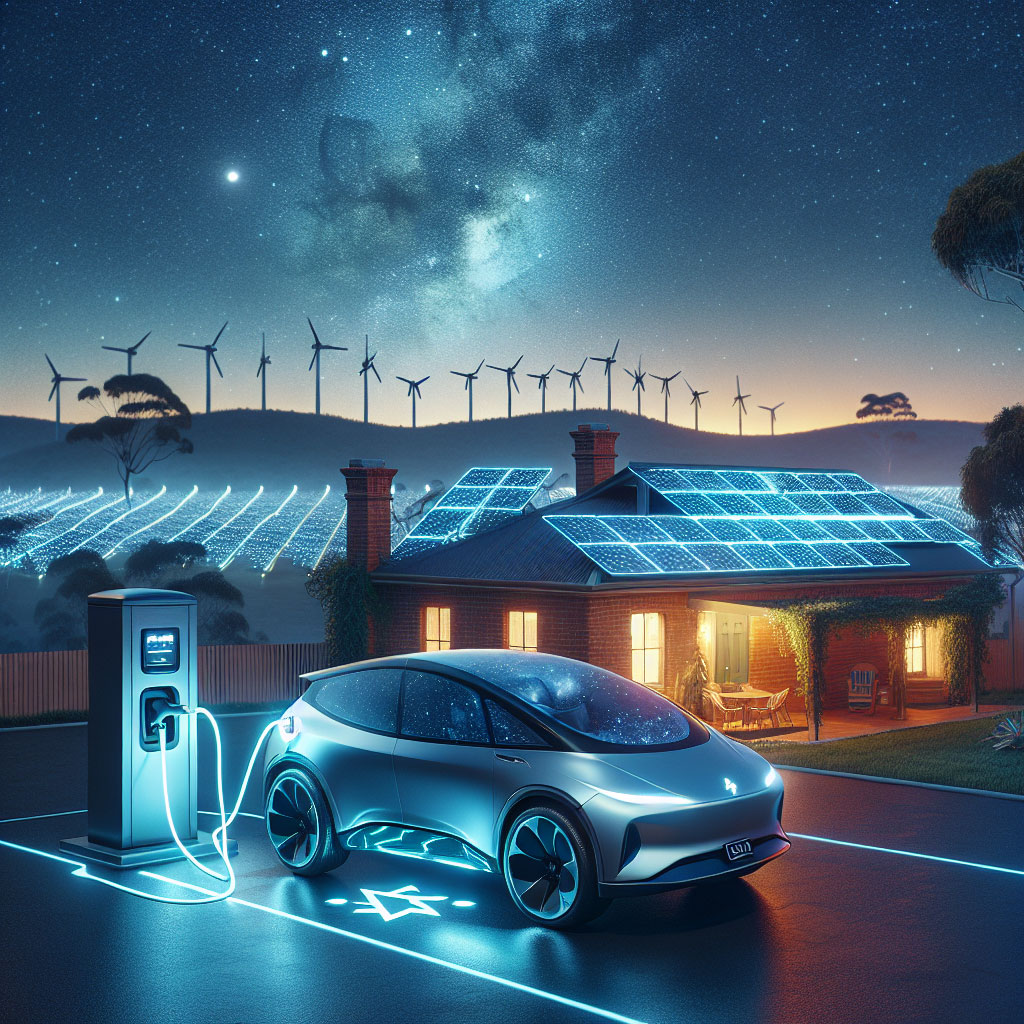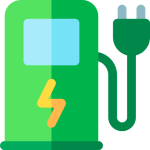
For new electric vehicle owners, navigating the various charging connectors can be a major source of confusion. When you pull up to an untethered public charging station, you’ll be faced with a socket and a crucial decision: which cable to use?
While the Australian EV market has largely standardised on one plug, legacy vehicles and imported models mean drivers must still understand the difference between Type 2 vs Type 1 to ensure they can charge anywhere, anytime.
This guide from EV Evolution breaks down the two main EV charging plugs Australia uses for AC charging, explains why one is dominant, and highlights the essential accessories needed to ensure complete compatibility across all public infrastructure.
The Dominant Force: The Type 2 (Mennekes) Connector
The Type 2 connector (formally IEC 62196-2, also known as the Mennekes plug) is the undisputed AC charging standard in Australia, Europe, and much of Asia.
Key Features of Type 2
- Design: Features a 7-pin design with a distinct oval shape.
- Charging Capability: This is the Type 2’s major advantage: it supports both single-phase (up to 7kW ) and three-phase (up to 22 kW ) AC charging. Since most Australian homes and public sites have three-phase power available, the Type 2 plug is crucial for faster AC speeds.
- Security: Type 2 features an electronic locking mechanism. When charging starts, the plug is automatically locked into the car’s inlet, preventing theft, vandalism, and accidental unplugging—a vital safety feature for public charging.
- Modern EV Standard: Almost every new EV sold in Australia since approximately 2019 (including Tesla, BYD, MG, Hyundai, Kia, Polestar, and European manufacturers) comes with a Type 2 charging inlet as standard.
In summary: If you drive a modern EV in Australia, your charging inlet is Type 2, and the cable you need for untethered public charging is a Type 2 to Type 2 cable.
The Legacy Plug: Understanding the Type 1 (J1772) Connector
The Type 1 connector (formally SAE J1772) was the original frontrunner in the Australian EV market, primarily due to the early popularity of imported vehicles from the US and Japan.
Key Features of Type 1
- Design: Features a 5-pin design with a rounder, more circular shape
- Charging Capability: Type 1 is limited to single-phase AC charging only, with a maximum speed of approx 7.4 kW. It cannot access the faster 22 kW three-phase charging speeds available at many public destinations.
- Security: It uses a manual plastic latch system on the plug to secure it to the car’s inlet.
- Compatibility: This plug is typically found on:
- Older models of vehicles like the Nissan Leaf (pre-2018).
- Some imported or earlier Plug-in Hybrid Electric Vehicles (PHEVs) like the Mitsubishi Outlander PHEV.
The Compatibility Challenge: Type 1 in a Type 2 World
The challenge for owners of Type 1-equipped vehicles is that the vast majority of new public AC charging infrastructure in Australia is installed with Type 2 sockets.
If you pull up to a shopping centre with a Type 1 car and find an untethered Type 2 charging point, your standard Type 1 cable will not fit. Without the right gear, you will be unable to charge.
🤝 The Solution: Bridging the Gap with Adapters and Specialty Cables
For vehicle compatibility, there are two solutions, and both are essential accessories for Type 1 owners and highly beneficial for multi-EV households:
1. The Type 2 to Type 1 Charging Cable
This is the most common and robust solution for the legacy EV owner. This is a single, continuous cable with a Type 2 plug on one end (to connect to the public charging station socket) and a Type 1 plug on the other (to connect to your car).
- Benefit: It simplifies the connection and removes an extra point of potential failure compared to using a separate adapter. It is the most reliable way for a Type 1 car to access a Type 2 public socket.
2. The Type 2 Adapter
An adapter is a short, small device that plugs into your car’s Type 1 inlet and provides a Type 2 socket, allowing you to plug a standard Type 2 cable (like a friend’s or a common portable one) into it. Alternatively, an adapter can convert a public Type 2 socket into a Type 1 socket.
- Benefit: These adapters are small, highly portable, and incredibly useful for families who own both a Type 1 EV and a modern Type 2 EV, as it allows them to share accessories and access the same charging points.
🌐 The DC Fast Charging Connection: CCS2
While Type 1 and Type 2 refer to slower AC charging, any guide to EV charging plugs Australia uses must mention the dominant standard for rapid DC (Level 3) charging: the Combined Charging System 2 (CCS2).
- Design: The CCS2 connector is essentially a Type 2 plug with two large, powerful DC pins added underneath.
- The Combo: This “combo” design means the same charging inlet on your car can accept a standard Type 2 plug for home AC charging or the larger CCS2 plug for public DC fast charging.
- Tethered: Importantly, you never need to carry a CCS2 cable or adapter. All public DC fast-charging stations have the thick, high-power CCS2 cables permanently attached (tethered).
Key Takeaway: If your car has a Type 2 inlet for AC charging, it almost certainly has the full CCS2 inlet for DC fast charging. If your car has a Type 1 inlet, it will have a separate, dedicated DC charging port (usually the CHAdeMO standard).
🔑 Your Compatibility Checklist
To ensure hassle-free charging on Australian roads, every EV owner should confirm their essential charging accessories:
| Your Car’s AC Inlet | Your Essential BYO Cable / Accessory | Why You Need It |
| Type 2 (Modern EVs) | Type 2 to Type 2 Cable (Mode 3) | Required for the vast majority of untethered public AC charging sockets. |
| Type 1 (Older/Imported EVs) | Type 2 to Type 1 Cable (Mode 3) | Mandatory to connect to modern Type 2 public AC charging infrastructure. |
| Any Car | Portable Charger (Mode 2) | For slow emergency charging from a standard 10A or 15A wall socket. |
Future-Proofing Advice: Even if you currently drive a Type 1 vehicle, purchasing a high-quality Type 2 adapter or cable now is a smart move. Australia is unequivocally committed to the Type 2/CCS2 standard, and having the accessory ensures your charging options remain wide open for years to come.
Don’t let the wrong plug leave you stranded. Ensure you have the right cables and adapters for maximum compatibility across Australia’s rapidly evolving charging network. Shop EV evolution’s certified accessories today.
Frequently asked questions
What is the difference between Type 1 and Type 2 connectors?
Type 1 (SAE J1772) is a single-phase AC connector commonly found on older imports and early PHEVs; it’s typically limited to about 7.4 kW. Type 2 (IEC 62196-2, Mennekes) supports single- and three-phase AC, commonly enabling 7.4 kW or 22 kW public AC charging (and technically up to 43 kW with specific hardware). Type 2 is the current Australian standard.
Do I need to carry a cable or an adapter?
If you regularly use untethered public AC chargers, carry the cable or adapter that matches your car’s inlet. Modern Type 2 cars need a Type 2-to-Type 2 cable. Type 1 cars need a Type 2-to-Type 1 cable or a certified adapter. For DC fast charging you normally do not need to carry anything because DC chargers are tethered.
Can a Type 1 car use DC fast chargers?
It depends on the DC inlet. Many older Type 1 vehicles that support DC charging use the CHAdeMO standard. CHAdeMO chargers still exist in Australia but are less common than CCS2. If your car supports DC charging, check which DC standard it uses before planning long trips.
What is CCS2 and why does it matter?
CCS2 (Combined Charging System, Type 2 variant) combines the Type 2 AC interface with two extra DC pins for high-power charging. It is the dominant DC fast-charging standard in Australia and Europe. Cars with CCS2 can access most modern high-power DC chargers.
Are CHAdeMO chargers still available in Australia?
Yes-CHAdeMO chargers remain in some locations for older cars (e.g., early Nissan Leafs). However, new deployments favour CCS2, and overall CHAdeMO availability is gradually reducing. If you rely on CHAdeMO, plan routes carefully and check network maps.
Are adapters safe and legal to use?
Adapters that are properly manufactured, certified and used in accordance with vehicle and charger specifications are generally safe. Avoid cheap, uncertified adapters. Check standards, IP ratings and supplier reputation. Some networks or sites may decline charging if they consider an adapter unsafe or if it interferes with the locking/communications.
How can I future-proof my home charging setup?
Install a Type 2-compliant wallbox with smart features (scheduling, load management and app control), ensure your electrician sizes the supply for likely future needs, and consider solutions that support firmware updates. If you may own multiple EVs or want V2G capability in future, discuss those options with suppliers.
About EV Evolution
EV Evolution is the leading online platform dedicated to Australian electric vehicle owners and enthusiasts. We foster a vibrant community, delivering essential EV news and insights, and enhancing user engagement through our innovative, AI-powered chatbot for dynamic discussions. Our mission is to empower Australian electric vehicle owners and enthusiasts by fostering a vibrant, AI-driven online community that connects, informs, and advances the nation’s electric vehicle landscape.




